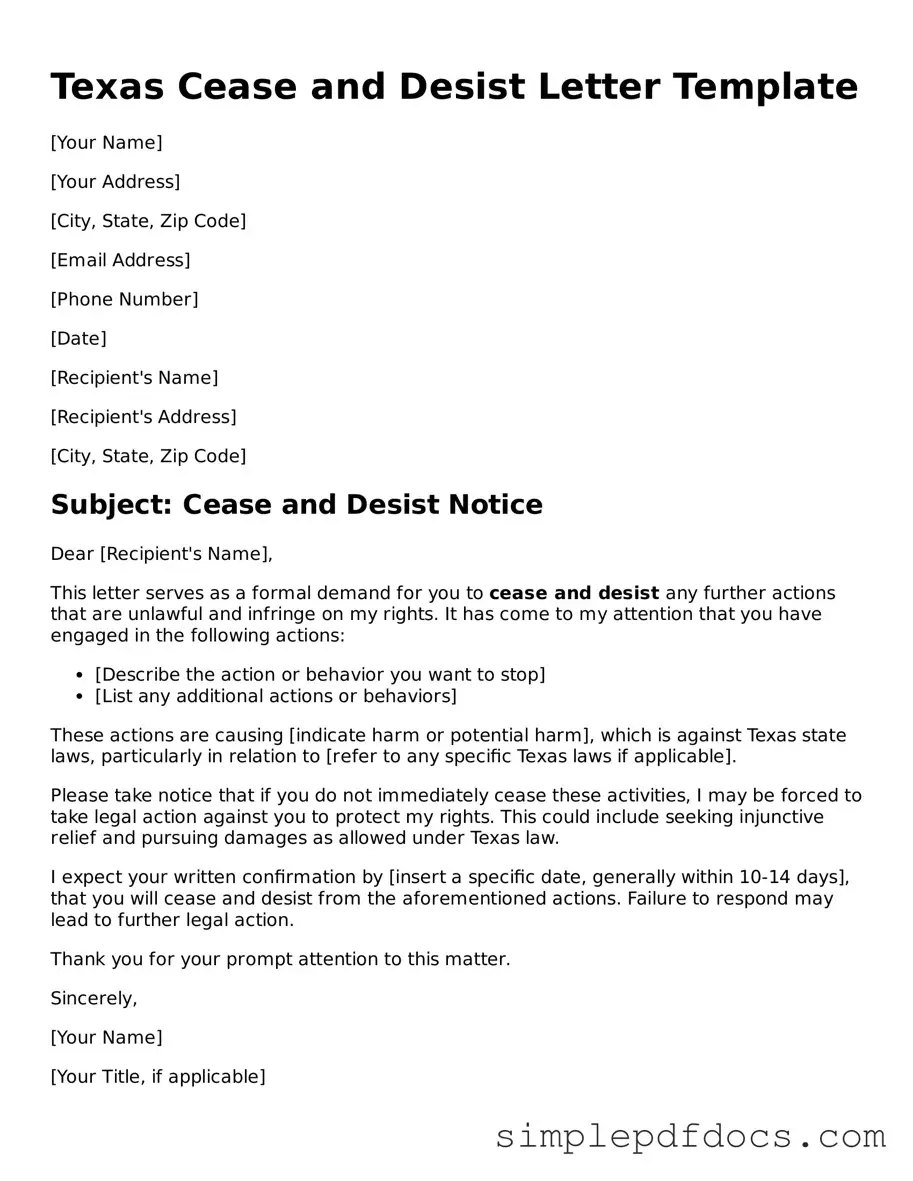The Texas Cease and Desist Letter form serves as an important tool for individuals and businesses seeking to address unwanted actions or communications. This form allows a sender to formally request that a recipient stop specific behaviors that may infringe on their rights, such as harassment, copyright infringement, or defamation. By clearly outlining the nature of the objectionable conduct, the letter aims to provide a concise explanation of the issues at hand. It typically includes essential information such as the names and contact details of both parties, a description of the offending actions, and a request for compliance within a specified timeframe. Additionally, the letter may indicate potential legal consequences if the recipient fails to adhere to the request. While the use of a cease and desist letter is not a guarantee that the issue will be resolved, it can serve as a critical first step in addressing disputes and protecting one’s rights. Understanding the components and implications of this form can help individuals and businesses navigate conflicts more effectively.
